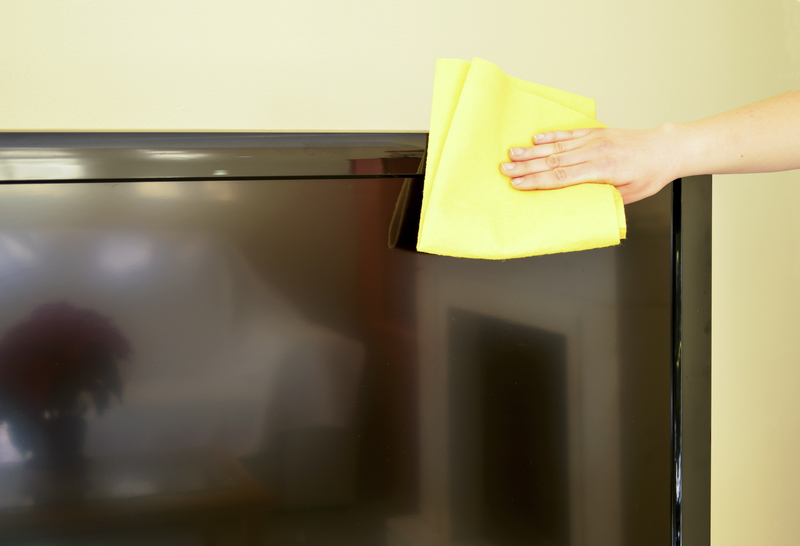10 Tips for a Mold-Free Bathroom Sanctuary
Is your bathroom prone to unwanted mold growth? You're not alone! Moisture-rich and often poorly ventilated, bathrooms are fertile grounds for mold. Creating a bathroom sanctuary that is completely mold-free is within your reach. Whether you're looking to maintain your newly renovated bathroom or restore an existing space, these top ten tips will help you achieve a mold-free bathroom environment that's as healthy as it is beautiful.
Understanding the Dangers of Mold in Bathrooms
Mold is a fungus that thrives in damp and warm places, making bathrooms the perfect home. Bathroom mold can damage surfaces, trigger allergies, aggravate asthma, and create an unsightly mess. Ignoring mold problems might lead to major repair costs and persistent health issues.
Common Types of Bathroom Mold
- Aspergillus - Often found in showers, on walls, or around windows.
- Cladosporium - Grows on wooden surfaces and fabrics in humid environments.
- Stachybotrys (Black Mold) - The infamous toxic mold, usually associated with severe water damage.
Whatever the type, battling bathroom mold is essential for your comfort and wellbeing. Here's how to transform your space into a mold-free sanctuary.

10 Essential Tips for a Mold-Free Bathroom Sanctuary
-
Maximize Bathroom Ventilation
Proper air flow is the enemy of mold. Always run your bathroom exhaust fan during and after showers for at least 30 minutes. If you have a window, open it to allow fresh air in. Fresh air dries surfaces quickly and prevents moisture from lingering, making it harder for mold spores to settle and grow.
-
Maintain Low Humidity Levels
Mold needs high humidity to survive. Use a hygrometer to monitor indoor humidity and keep it below 50%. If your bathroom consistently feels damp, invest in a dehumidifier. This simple device can dramatically lower the likelihood of mold growth by extracting excess moisture from the air.
-
Fix Leaks Immediately
Even a small drip can create the perfect breeding ground for mold. Regularly inspect under sinks, around toilets, tub surrounds, and behind washing machines. Address leaks or drips right away to prevent water from collecting in hidden places.
-
Use Mold-Resistant Materials
When upgrading your bathroom, select mold-resistant paint, grout, and drywall. Especially in high-moisture zones like showers and around tubs, these modern materials offer extra protection and make it much harder for mold to establish itself.
-
Clean Regularly with Mold-Fighting Solutions
Don't let soap scum and grime build up. Scrub showers, tubs, sinks, and tile grout weekly with a solution of vinegar and water, or an EPA-approved mold-cleaning product. Pay extra attention to corners and crevices, as these are mold's favorite hiding places.Routine cleaning disrupts mold cycles and keeps spores in check.
-
Dry Wet Surfaces After Use
Use a squeegee or towel to wipe down walls, shower glass, and bathroom floors immediately after each use. This extra step ensures that water doesn't sit on surfaces, which is vital for preventing mold in bathrooms.
-
Declutter and Organize
Overcrowded shelves and piles of unused bathroom products can trap moisture and block air flow. Streamline your space and organize essentials so that air circulates freely around all corners of your bathroom sanctuary. Consider open shelving and remove unnecessary rugs that can absorb and harbor moisture.
-
Seal Grout and Tile Properly
Grout and caulk are natural entry points for moisture and mold. Seal grout lines annually with a quality water-resistant sealer. Check caulk around tubs, showers, and sinks and replace any that appears cracked, moldy, or loose. Well-sealed surfaces resist mold and look cleaner longer.
-
Install an Exhaust Fan or Upgrade Your Existing One
If your bathroom lacks an exhaust fan, installing a high-quality, appropriately sized fan is one of the best investments you can make for a mold-free bathroom. Modern fans are quiet, energy-efficient, and can include humidity sensors for automatic operation. Make sure your fan vents to the outside, not just into the attic or crawlspace.
-
Keep Textiles Fresh and Dry
Bath mats, towels, and shower curtains all absorb moisture. Make it a habit to hang towels to dry immediately after use and wash them often. Use mold-resistant liners for shower curtains and regularly launder bathroom rugs.
Bonus: Natural Remedies for Minor Mold Growth
For small spots of visible mold, several household solutions can be surprisingly effective:
- White Vinegar: Spray, let sit, and scrub away.
- Baking Soda Paste: Use to tackle stubborn areas on tiles and grout.
- Hydrogen Peroxide: Acts as a powerful disinfectant for non-porous surfaces.
Always wear gloves and ensure ventilation when cleaning mold, and never mix vinegar with hydrogen peroxide or bleach.
Design Ideas for a Mold-Free Bathroom Retreat
Building or remodeling your bathroom? Choose features that not only beautify your space but also contribute to a mold-resistant environment:
- Spacious Showers: Minimize grout lines and opt for seamless surfaces like glass or solid-surface materials.
- Large Format Tiles: Reduce the number of grout joints where mold loves to hide.
- Wall-Mounted Vanities: Simplify cleaning and improve air flow underneath.
- Glass Shower Doors: Easier to keep dry and clean compared to curtains.
- Smart Storage: Use open shelving and minimal accessories to prevent clutter and allow maximum air circulation.
How to Prevent Mold from Returning
Mold prevention in your bathroom sanctuary requires an ongoing commitment to cleanliness and moisture control. Here are some ongoing practices to ensure your sanctuary stays mold-free:
- Maintain Regular Cleaning Routines - Make bathroom cleaning a weekly habit.
- Inspect Hidden Areas - Check behind toilets and under sinks for leaks or condensation.
- Promptly Replace Damaged Materials - Replace or repair water-damaged drywall, ceiling tiles, or flooring promptly.
- Educate Family Members - Teach everyone about the importance of using the fan and drying wet surfaces.
When to Call a Professional for Bathroom Mold Removal
While small amounts of mold can often be handled with DIY remedies, large infestations (greater than 10 square feet), recurring mold issues, or signs of structural damage require a professional mold remediation service. Mold can sometimes lurk behind walls, under floors, or above ceilings, making expert inspection and removal the safest choice.

FAQ: Creating and Maintaining a Mold-Free Bathroom Sanctuary
-
How often should I clean my bathroom to prevent mold?
Deep clean at least once a week, and wipe down wet surfaces after every use. -
What is the best cleaner for bathroom mold?
Vinegar and water, or a bathroom-specific mold remover, are both effective, eco-friendly choices. -
How do I know if my bathroom needs better ventilation?
If fog lingers on mirrors and walls after a shower, or if there's a persistent musty odor, your bathroom likely needs improved airflow. -
Can I use bleach to kill bathroom mold?
Bleach can kill surface mold on non-porous surfaces, but it's less effective on porous materials where mold roots can penetrate.
Your Mold-Free Bathroom Oasis Awaits
Transforming your bathroom into a sanctuary that's truly free from mold doesn't have to be overwhelming. With a consistent approach to moisture control and smart material choices, you can enjoy a healthier, cleaner, and more inviting space for years to come.
Begin implementing these practical tips today, and soon you'll breathe easy each time you step into your fresh, bright, and mold-free bathroom sanctuary.


